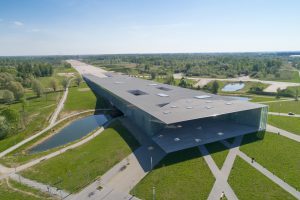
AAC was used in storage rooms in the basement of the National Museum for moisture balancing purposes. Besides building the non-bearing walls from AAC, also concrete walls were covered with AAC. Walls were left without finishing as they have to absorb the excess moisture when level is too high and to relieve the moisture when level is low.
© 2024 EAACA